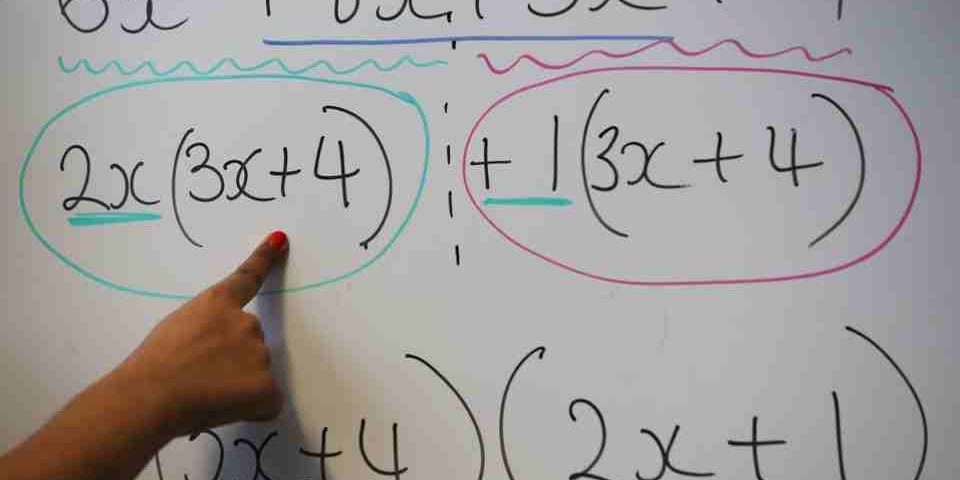The Passport to Advanced Math subsection of the SAT, which includes 16 questions out of 58 total, or 28 percent, is perhaps the most complex part of the math section. While this can be intimidating to students, taking the time to study and ensuring you know your formulas will help you greatly.
- 如有疑问,请联系电邮
- contact@eetcgroup.com
USNEWS:如何获得SAT高级数学课程的通行证

大学预科学校(The College Preparatory School, Oakland, CA)
2019年1月1日
中国国家留学基金管理委员会第十八次全体委员会议召开
2019年1月2日By Sonya Ellis
SAT高级数学部分共16道题,占全部58个问题的28%,是数学考察部分最复杂的。虽然这对学生来说是一种威胁,但是花时间学习并确保你知道你的公式将对你有很大帮助。
以上是USNEWS对SAT中数学部分的评价。但实际上,这个评述基本上可能仅适用于美国本土的高中生。而且通过调查各州前百的公立学校,也不难发现95%以上的高中生都是能通过数学部分考试的。当然,如果是一名“合格”的中国高中理科生,这部分的数学题基本不是难事。但这篇文章给我们一个提示就是,作为中国学生,一定要将数学这部分分数拿到,不是十拿九稳,而是百分百!
Many students may not know where to begin when asked to prepare for a test that covers so much content. While an overview of the Passport to Advanced Math content can be found on the website of the College Board, the organization that administers the SAT, below is more information on three key concepts you should focus on.
Practice simplifying equations. One thing worth noting about Passport to Advanced Math is its emphasis on equation simplification. This arises in several contexts, including rational expressions.
For success on Passport to Advanced Math, you must know how to move variables within an equation without making errors, as well as the rules for the quadratic equation. You should also be comfortable with factoring before you sit for the SAT. Use the quadratic formula only when you cannot find a faster way, but also be prepared to use the discriminant – b2 – 4ac – in order to tell the number of solutions for a quadratic equation.
While you may be very comfortable solving equations or expressions in certain forms, you should also be prepared to move between different forms fluidly. To practice this fluidity, you can do something as simple as setting aside 10 minutes each day to work with equations and expressions in multiple forms.
Get comfortable adding, subtracting, multiplying and dividing polynomial expressions. The addition or subtraction of polynomial expressions is relatively easy – you simply combine like terms, such as 2x and 5x or -1 and 3. When dealing with subtraction, it is important to remember to reverse the sign in each term prior to adding the expressions; for example, -10y would become 10y.
For multiplication, remember to use the FOIL method – first, outside, inside, last. You should also ensure that you multiply each term in the second polynomial by each term in the first polynomial.
Even if you feel secure in adding, subtracting and multiplying polynomial expressions, it is wise to incorporate video review of dividing polynomials into your study regimen. Students often feel unprepared in this area, and you can likely benefit from multiple modes of review.
Brush up on exponents. When working with exponents in Passport to Advanced Math, remember that when simplifying expressions, you either need the same base or the same exponent in most cases.
It can be helpful to recall that the “core” exponent rules follow a similar pattern. For example, when multiplying similar bases, you add the exponents. When dividing similar bases, you subtract the exponents. If you must raise an exponent to another exponent, you multiply the exponents.
If the bases to be multiplied are different, but the exponent is the same, you multiply the bases before raising them to the exponent. If the bases and the exponents are different, you calculate each term separately and then multiply the results.
For division, if the bases to be divided are different, but the exponent is the same, you divide the bases before raising them to the exponent. If the bases and the exponents are different, you calculate each term separately and then divide the results.
You can find an exponent formula sheet online that covers these actions, though you can ignore the rules for derivatives and integrals for now, as the SAT does not cover calculus. Notice that the rules described above ultimately change the operation to a simpler operation. Approaching exponents this way may help with memorization.
In order to ensure you are prepared for Passport to Advanced Math, you will need to practice. The College Board offers a number of practice problems with explanations.
After you have thoroughly reviewed the formulas and content for this section, work your way through these practice materials and see how you do. Any content you do not feel ready and confident to tackle should be reviewed further. Then, it will be time to take practice tests to make sure you can identify and solve these problems when they are mixed in with other math concepts.




